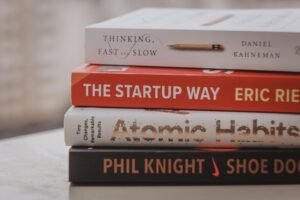China’s economy, a long-time powerhouse of global growth, begins 2025 at a critical crossroads. Facing challenges in domestic demand, foreign investment, and real estate, the nation’s notable slowdown has sparked international concern. With investors eagerly watching for decisive government action, the key question remains: Can China balance short-term relief with long-term economic stability?
Once renowned for its rapid growth, China’s economy has shown increasing signs of strain. Official GDP figures for 2024 are expected soon, shedding more light on the severity of the slowdown. Consumer prices outside of food and energy grew a paltry 0.5% last year, marking the slowest pace in a decade, and dipping demand has raised fears of potential deflation. Foreign investment, once a cornerstone of China’s economic rise, also continued its downward trajectory. According to Beijing’s Mayor Yin Yong, shrinking consumer spending and decreasing international investments have disrupted crucial revenue streams.
In response, the Chinese government has rolled out targeted measures aimed at reigniting growth. Fiscal policies have taken center stage, including the issuance of ultra-long bonds and the launch of a trade-in subsidy program designed to encourage consumer spending on items like electric vehicles, home appliances, and smartphones under certain price thresholds. By the close of 2024, 81 billion yuan out of a planned 150 billion yuan ($20.46 billion) had been committed to these subsidies. Rex Chen, CFO of ATRenew, predicted that such programs could boost recycling transactions by 10%, offering a glimpse of industry-specific benefits. However, concerns linger about the long-term effectiveness of these measures. “This stimulus could offer a short-term lift to consumption, but it doesn’t address the economy’s deeper structural challenges,” explained Ting Lu, Chief China Economist at Nomura.
One of the most persistent hurdles China faces is its troubled real estate sector, historically responsible for over a quarter of its GDP. While property sales in key urban centers like Beijing and Shanghai posted a 40% year-on-year increase as of December 2024, smaller cities remain a pain point. Weak demand in these areas and high inventory levels could further depress housing prices. Fitch Ratings analyst Jeremy Zook cautioned that smaller-market housing prices are likely to decline even further. Yet, there are pockets of optimism: China’s new “whitelist process” for completing stalled apartment projects aims to restore some stability, while commercial real estate has exhibited signs of life. Shopping mall occupancy rates, once dismally low, improved to reach 90% within just one year. Still, high-end office rents in major cities like Beijing saw a steep 16% decline in 2024 and are projected to drop by another 15% in 2025.
Looking ahead, China’s broader economic strategy emphasizes both technological development and increased domestic consumption. Beijing is betting big on innovation, focusing on tech-driven growth to solidify its position as a global leader in advanced industries. Simultaneously, plans to drive consumer spending will likely take center stage at the annual parliamentary meeting in March. These dual objectives reinforce the government’s commitment to not just immediate recovery, but also economic resilience over the long term.
Ultimately, 2025 is shaping up to be a pivotal year for China’s economic ambitions. Will the government’s dual focus on immediate stimulus and structural reform successfully ignite recovery? While optimism lingers, caution reigns. For global investors, policymakers, and the Chinese public, the next steps could define not just China’s trajectory but also the broader global economic landscape. The world is watching—and waiting.












































Comment Template